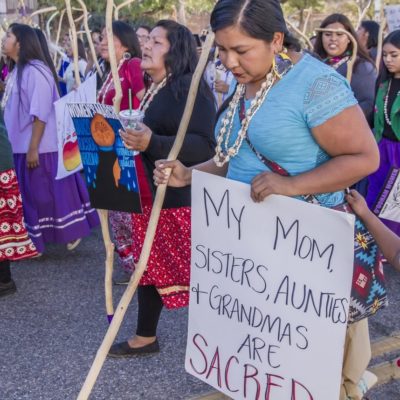Happy International Women’s Day!
Though there are many reasons to celebrate International Women’s Day (IWD) this year, in 2021 the Covid-19 pandemic threatens to exacerbate gender inequality and roll back progress made towards achieving the 2030 Agenda’s sustainable development goal to reach gender equality globally[i]. Meanwhile, climate change and its consequences are exacerbating existing vulnerabilities, particularly amongst the most marginalised. With women disproportionately represented among the world’s most marginalised, and often affected differently to men by environmental change, stresses and hazards, addressing how we approach gender in all aspects of our work has never been more essential.
In line with this year’s IWD theme of ‘choose to challenge’, Agulhas has been reflecting on how approaches to gender have evolved in the international development sector and our work. This year’s theme challenges us to ask ourselves how we can ‘choose to challenge’ bias when we see it, in our roles, workplaces and global conversations about gender equality and global equity.
Over time, the sector has seen a call to apply gender sensitive approaches and more recently, to ‘mainstream’ gender. Going beyond these two approaches is a call for gender transformative work.
By taking a gender sensitive approach, we seek to acknowledge and highlight ways in which the role of gender affects people differently. Often, this approach is utilised to raise awareness and to make accommodations to address gender differences. Gender-sensitive programming and policies are ‘aware of and address gender differences’[iii]. When conducting research or collecting data, a gender-sensitive approach may include collecting quantitative sex-disaggregated data, or mapping out what the gender roles and responsibilities are, making provisions to ensure that women and/or girls can not only attend but contribute to discussions. From a research team’s perspective, taking a gender-sensitive approach may, for example, mean ensuring there are child care provisions in place so women can attend focus groups.
Gender-responsive approaches acknowledge how the specific needs of girls and boys and women and men differ[iv]. Responsive approaches value the perspectives and experiences of each and contextualize the development differences[v]. Often, responses are to empower girls and women to improve participation, often in areas such as education and employment.
Gender mainstreaming is a trusted and globally accepted strategy for promoting gender equality in development and humanitarian work. The European Institute for Gender Equality defines gender mainstreaming as involving the ‘integration of a gender perspective into the preparation, design, implementation, monitoring and evaluation of policies, regulatory measures and spending programmes’[vi]. Gender mainstreaming has proven to help tackle gender inequality by bringing gender issues to the forefront of development work. However, it has limitations in practice.
Though considering the gendered impacts of programmes is an essential step in research work, the idea of ‘mainstreaming’, it may be argued, can lead to unintended consequences including; less funding for women-specific programmes, reinforced gender stereotypes and relations, and a lack of accountability for increasing women’s political and social capital[vii]. When gender is considered ‘mainstreamed’ in policies and organisations, its translation into action can sometimes be hindered by the perception that gender has been ‘covered’ once it has been considered, or by individuals not taking responsibility for enacting real change. It is important not to treat gender as a tick-box exercise, but rather to meaningfully consider the role of gender and its impact.
Gender transformative work aspires to ‘tackle the root causes of gender inequality and reshape unequal power relations’[viii]. This movement goes beyond raising awareness of gender and shifts focus towards challenging the structures and cultural norms that continue to enable and enforce the oppression of women and girls. Further, the way in which we understand gender in our analysis is broadened to be more inclusive and to step away the binaries of girls and boys, men and women. The core focus of gender transformative approaches to development is centred around power. Miller et al. identified 4 domains of power (2006):
- “Power over—defined as control over people, resources and others’ lives—is the most commonly addressed form of power.
- Power to act and to realize one’s aspirations is directly related to the agency dimension of empowerment and is frequently measured in terms of individual skills, capacities and self-confidence.
- Power within refers to a person’s or group’s sense of self-worth, self-awareness, self-knowledge and aspirations, which are also related to agency and shaped by social norms and gendered institutions.
- Power involves collaborative and collective power with others through mutual support, collaboration, recognition and respect for differences. This can take place at multiple levels, from household and intimate relationships to cooperatives and collectives, as well as broader-level coalitions and movements for change.” [ix]
Using these four domains of power, we can better understand how to consider the role of power in development work. Fundamentally, by considering gender inequality in these domains we can recognise that systemic change is required at the individual, interpersonal and institutional level, with a focus on disrupting and equitably transforming systems. It is not enough to just redistribute and balance systems of privilege, hierarchy and oppression in isolation. Gender transformation is therefore required to address not only gender in our response to inequality, but in the design, evaluation and strategy of development work to address the power imbalances which enable and perpetuate gender inequality.
A holistic and intersectional approach can inform a gender transformative framework, applied using a gender lens. When it comes to MEL, having gender-transformation informed indicators can be particularly helpful, though practitioners must recognise that to see the impact of transformative approaches, a generational approach will be required. Transformational change requires time, and therefore it is essential to factor in both time and resource, as well as to consider how to measure change and the direct and indirect impacts of development assistance on members of society.
Gender is a prominent part of Agulhas’ portfolio of work across both the Climate and CRUNCH hubs. An ICAI 2020 review on modern slavery, supported by Agulhas, included a gender analysis. This review made gender informed recommendations that encouraged programme teams to fill knowledge and evidence gaps including sex-disaggregated and sector specific data, conducting gender analysis and more comprehensive evaluations to guide the choice of interventions. The issue of modern slavery affects men and women differently, with inherent power dynamics at play. By using a gender lens from the review sub-questions throughout the data collection and analytical frameworks, the team could conduct a gender analysis beyond a tick box approach.
Our recent support of the Equity Index initiative also seeks to ensure there is better data collected and analysed across organisations in the international development sector. The Index will create a quality baseline index for equity, built on feminist and anti-racist principles, to enable better consideration of gender transformation and power imbalances both within and between organisations.
In a recent evaluation of a regional programme aiming to enable women’s empowerment and access to livelihoods in neighbouring countries affected by the Syrian crisis, the approach used made gender transformation a key part of the analysis. The evaluation team applied a feminist theoretical lens; grounding the evaluation in an understanding of gender roles, systemic power imbalances and obstacles to women’s empowerment. Thus, the evaluation applied both a gender sensitive and gender transformative approach.
The feminist lens manifested in the application of a three distinct dimensional model of women’s empowerment: micro-level (personal level – showing confidence, autonomy and access to capital), meso-level (beliefs and actions in relation to the people women interact with including men), and macro-level (broader societal context and structure). The evaluation was also participatory and culturally sensitive and used gender-disaggregated data where possible.
Each of the gender approaches discussed has its advantages and limitations. Despite their differences, what they all demonstrate is that gender cannot be a second thought in development research and evaluation. Approaches must be gender sensitive if they are to ensure inequality is not exacerbated, and transformational to dismantle systems enabling power imbalance whenever possible.
In 2021 we are being asked to ‘choose to challenge’ gender bias and inequality. This year, we choose to challenge our own practices and methods and to better understand how we can work towards intersectional and gender transformative approaches. We will strive to challenge not only gender bias, but the systems and root causes of inequality whenever we can.
[i] https://www.unwomen.org/en/digital-library/publications/2020/07/spotlight-on-gender-covid-19-and-the-sdgs and https://www.globalcitizen.org/en/content/sdg-report-2020-gender-equality-covid-19/
[ii] https://www.internationalwomensday.com/Theme
[iii]https://www.unicef.org/rosa/media/1761/file/Gender%20glossary%20of%20terms%20and%20concepts%20.pdf
[iv] https://www.unicef.org/media/58196/file
[v]https://www.unicef.org/rosa/media/1761/file/Gender%20glossary%20of%20terms%20and%20concepts%20.pdf
[vi] https://eige.europa.eu/gender-mainstreaming/what-is-gender-mainstreaming
[vii] https://www.bond.org.uk/news/2019/03/gender-mainstreaming-moving-from-rhetoric-to-reality and https://gadnetwork.org/blogs/2015/3/6/20-years-of-gender-mainstreaming-how-can-we-do-it-better
See http://www.genderanddevelopment.org/issues/20-3-beyond-gender-mainstreaming/resources-beyond-gender-mainstreaming/#GM for further resources
[viii] https://www.unicef.org/media/58196/file
[ix] Miller V, VeneKlasen L, Reilly M and Clark C. (2006) ‘Making change happen: Power. Concepts for Revisioning Power for Justice, Equality and Peace’. Washington, DC: Just Associates.
Also helpfully referenced in: https://www.care.org/wp-content/uploads/2020/05/working_paper_aas_gt_change_measurement_fa_lowres.pdf


